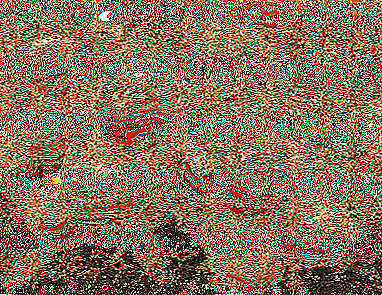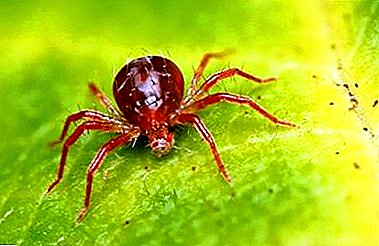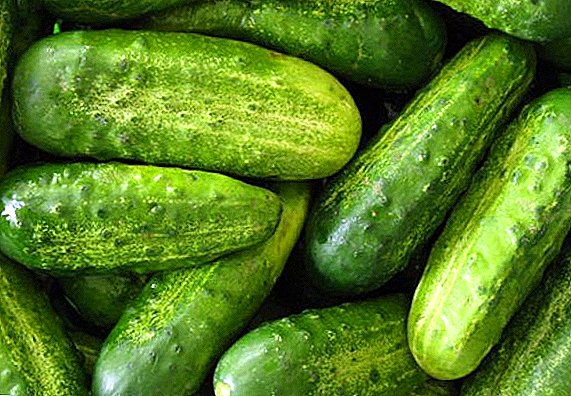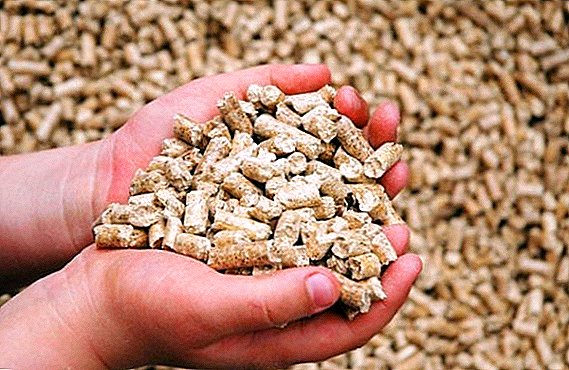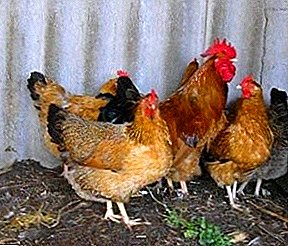
It is a mistake to believe that by purchasing daily-healthy, seemingly mobile, moving chickens, it will be possible to nurture them without loss if they are provided with proper conditions of care.
Within a few weeks, until the chicks become stronger and do not replace the fluff on the plumage, you need to carefully monitor their condition.
Since the violation of the rules of incubation can lead to the fact that the umbilical ring of the chick does not heal and is likely to lead to his death.
In the first days of life, chicks should be carefully monitored, because immature chickens are susceptible to various infections and diseases.
Omphalitis is not uncommon when birds develop an umbilical-yolk infection.
If the umbilical cord does not heal well, then liquid leaks from the non-healing wound. Particles of food, litter, bedding material adhere to the wet surface of the body.
From a place of pollution, pathogenic organisms easily enter the body of a little chicken. He gets omphalitis.
In addition to chickens, other poultry are susceptible to the disease: goslings, ducklings, turkey poults.
What is omphalitis in chickens?
This disease affects not only birds, but also people and animals. Translated from the Greek omphalitis means "navel inflammation."
And, as you know, skillful healers and healers of the Ancient Roman era were famous for their art in the field of treating various diseases. Therefore, they own the first attempts and successes in the treatment of omphalitis.
Pathogens
In waste products, in stale food multiply Streptococcus, Proteus, Staphylococcus bacteria.
This is a very favorable environment for their development. Getting through the wound into the body of the chick, they cause a strong inflammatory process.
Causes
 To disease, usually leads non-compliance with incubation rules.
To disease, usually leads non-compliance with incubation rules.
If the temperature in the incubator is too high, then a large number of chicks will be born with umbilicals similar to a large black dot.
If, on the contrary, the temperature is too low, then chickens with unhealed and unopened umbilical openings are born.
High air humidity will cause the weight loss to be too small at birth, and the yolk sac will remain enlarged, which will not allow the umbilical ring to drag on.
And in too dry air, the yolk sac quickly loses moisture and hardens, and the delicate tissue around the navel is damaged.
Course and symptoms
 It is necessary to closely monitor the behavior of chicks, because already on the first day of life, some of them may die. The peak of mortality usually occurs at 6-7 days after their birth.
It is necessary to closely monitor the behavior of chicks, because already on the first day of life, some of them may die. The peak of mortality usually occurs at 6-7 days after their birth.
Sick chickens do not run and do not frolic like everyone else.. They stand idly by, swaying slightly.
Head down. Missing appetite. They do not drink or eat. Cluster, indifferent, do not react to external stimuli.
The yolk contains nutrients.
The body temperature of newborn chicks is simply ideal for the rapid reproduction of bacteria, which, once in the open space of the umbilical ring, immediately begin their disastrous mission.
The umbilical ring is a scabby formation in which the cells die.
Diagnostics
In laboratory studies, the opening of sick chicks opens the following picture:
- blood vessels are stretched in the yolk sac, it is inflamed;
- the skin around the navel is discolored;
- from the calf spreads foul odor.
Fight and prevention
 By itself, the process of giving birth to chickens is not sterile, because particles of blood, down, shells, dust mix and stick to the wet little body in the first hours.
By itself, the process of giving birth to chickens is not sterile, because particles of blood, down, shells, dust mix and stick to the wet little body in the first hours.
But still pre, before hatching chicks, thorough disinfection of incubation trays is necessary.
Even this measure will significantly reduce the risk of disease.
In a dry, sterile incubator, where the farmer tried to carefully follow all the rules of hatching, the chicks, for the most part, are hatched, for which the navels are at first slightly open, but they drag on quickly by themselves.
During this time, the chicks are completely dry. Omphalitis under these conditions, as a rule, no longer occurs..
It is necessary to ensure that the eggshell is always dry, because in wet conditions the bacteria do not sleep and begin to spread rapidly.
And at the first cracked shell when hatching, they easily penetrate to the newborn chicken. Before transfer, you should also carefully inspect the trays to ensure that they are clean and dry. After transferring to the incubator drawer, fumigation is necessary.
 Curly chickens are a rather unusual, but very cute birds. The unusual appearance interests many poultry farmers.
Curly chickens are a rather unusual, but very cute birds. The unusual appearance interests many poultry farmers.The symptoms of bird flu in chickens are always available for viewing at: //selo.guru/ptitsa/kury/bolezni/k-virusnye/ptichij-gripp.html.
Before you put the eggs in the trays and begin to withdraw chickens in the incubator, you need to carefully read the information on this topic to avoid all possible flaws and errors, and in the end not to be disappointed that this idea will turn out.
Some farmers make the mistake of thinking that they need to help the wet chicken hatch from the egg. Breaking the shell with your fingers is undesirable. You can easily damage the skin of the chicken, injure delicate tissues and blood vessels.
The observance of optimal breeding conditions in the hatching box allows for the production of healthy offspring of birds.
If sick chicks are still born, the area of the umbilical ring should be treated with special ointments that contain antibiotics. Or use for these purposes weak disinfectant solutions that do not damage or burn sensitive tissues.
For output, you need to select healthy breeding individuals. After all, the normal fertilization of eggs and the condition of hatched chicks directly depends on the health of the hens.
Adult chickens should receive a complete and varied food and be regularly on the paddocks.
Compliance with all the rules can significantly reduce the mortality of chickens and raise healthy offspring of chickens, which will delight the farmer, and in the future will provide him with enough meat and eggs.
Everything that is done hastily does not lead to anything good. Careful and responsible attitude to the process of incubation of the output of chickens will give good results in the future.


